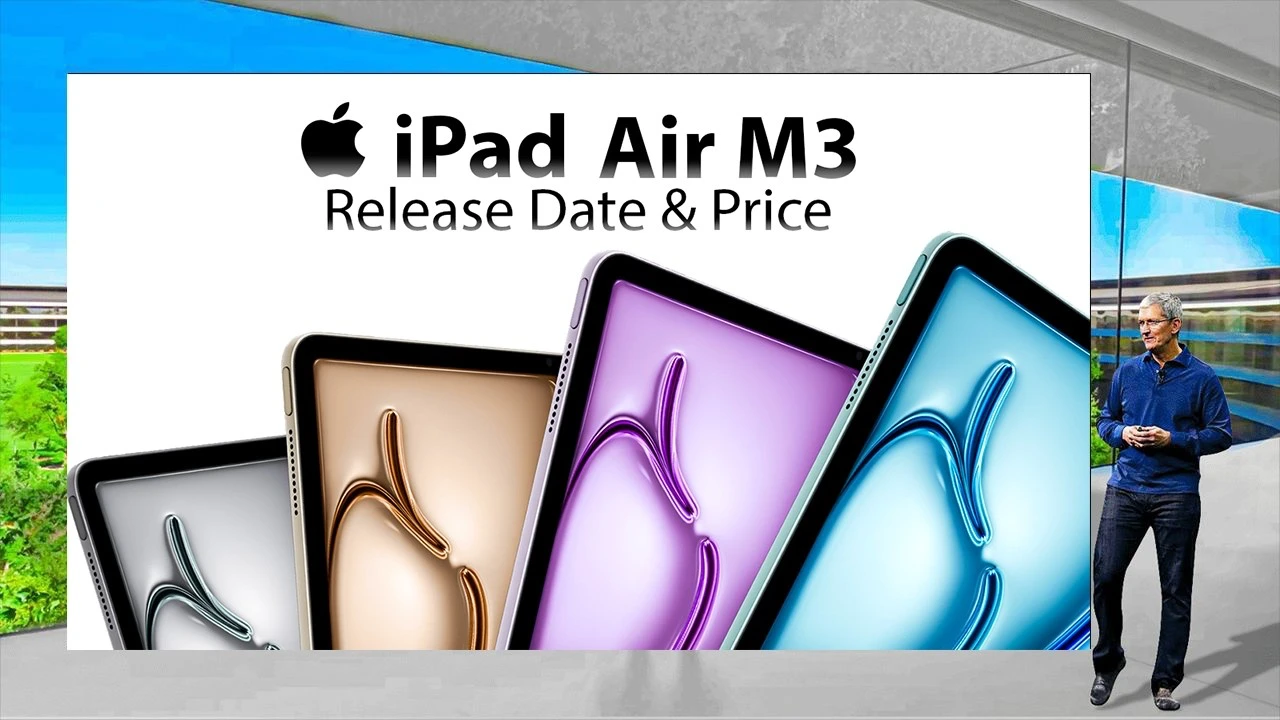The year has come and gone and not much change can be said to be had. But for its price alone, the essential iPad still is an attractive purchase.
The usually purple one newest iPad stands here before me, big-screened, powered by an M3 chip-an iPad Air. But one wouldn’t know from a casual glance that it was indeed something new. The new iPad Air may be an excellent general-purpose iPad for many who can afford it, but it just does not change the equation this year for anybody.
It’s now 2025, and the iPad continues to present much the same proposition: a really great tablet that can aspire to be your laptop replacement (with a little software-hurdle, of course). And once more, just like last year, the “iPad Air” is inaccurate: It’s not the thinnest iPad. Nonetheless, it’s the budget “Pro” for the vast majority.
Noting that updates for the iPad Air and iPad Pro were given about a year ago: The iPad Air got the M2 processor while the iPad Pro got the M4-an entire overhaul, complete with a fancy new OLED display. The iPad Pro has not yet seen its update this year, as it is still quite exorbitant in price ($999 and up). Meanwhile, the Air got a chip bump to the M3 processor and a completely revamped slightly cheaper Magic Keyboard. The base price remains the same at $599 (£599, AU$999).
What updates? These are not inspiring-the least excited I think I’ve ever been over an iPad revamp-I mean, yes, it is up for even better performance for no price increase, which is great, but it does not really change anything very new.
One year back, I had defined the iPad Air as the iPad Pro one should buy. Surely, my sentiments are unchanged. Sure, an fancier M4 iPad Pro could sit very nice, but how to justify 400 extra dollars for an otherwise aging device? True, the iPad Air is a bit thicker and does not have Face ID…or lidar in the back…or an M4 chip…or an OLED display. But what it does have, and very well, is performance, plus it still works with the Pencil Pro. How are you with those compromises?

There is yet another iPad to consider for all, and that is the basic one. The new entry iPad, which comes along with this Air, sounds more than enough. I am yet to test that one (Apple hasn’t sent them for review at the same time as this Air), but with storage of 128 GB and an even better A16 processor (that can’t run Apple Intelligence), it is a good option. If you want to use a Pencil Pro and are planning heavy use of either AI or graphics features on the iPad, then the Air is your most economical choice.
I’ve used for testing a 13-inch configuration of the iPad Air sent to me for review, with 1TB storage. Now that’s pricey for an iPad ($1,299), and one would probably just upgrade to the Pro at that price. As for the one I would consider, that’s the 11-inch model with lesser onboard storage. (The other one is so letterboxed for movies with that 13-inch model’s display aspect ratio that it’s less than you would think is suitable for video watching anyway.)
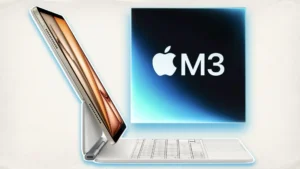
Air vs. iPad: Spend $250 more and unlock key upgrades
Consider spending more on this Air rather than the entry-level $349 iPad, even if that means spending $250 more. The two big ones are the M3 chip and Pencil Pro ($129, sold separately) compatibility.
The M3’s advantages over the A16 chip are still worthy of conjecture (as I haven’t yet been able to test the new iPad), but in this case, big graphics, big AI capabilities, and big speed will mean the M3 is going on for a long time. Most iPad owners don’t need all that power, but on account of the fact that Apple has once again excluded the standard iPad from Apple Intelligence compatibility, you may feel better about the Air in the long term.
It’s the same while working with Pencil Pro, Apple’s superior stylus. It’s a more feature-rich tool than the regular Pencil that works with the iPad, and a rational reason to make Air as an automatic choice for artists.
The other annoying thing is that Apple messed up the entry-level iPad by purposely dropping Pencil Pro support and one Apple Intelligence-capable chip to make it even more alluring. But that is the way it lies this year.
Air vs. Pro: The Pro’s advantages diminish
Right now, the iPad Pro makes it trickier to justify the extra cost. The performance gap of M3 against M4 chips gets reduced when compared to M2 versus M4 gap comparisons from last year. The iPad Air supports this year’s same kind of Magic Keyboard and Pro Pen. If you care about having a high-contrast HDR custom OLED display, getting a thinner profile, Face ID camera, and rear-mounted Lidar on the iPad Pro, then you’ll have to pay $400 extra. To me, that just does not add up.
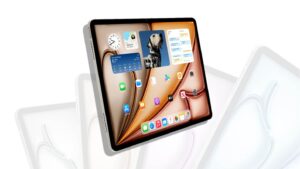
M3 chip? Sure, it’s a good upgrade
Apple’s M series chips are absolutely fantastic performers, but I would argue that achieving substance on the iPad is more difficult to grasp unless you’re a serious power user in AI or graphics or video or photo work-a true designer with a sense of the professional view. One more stairway has the M3 bump: On Geekbench 6, the multicore score was 11,643 versus the M4 iPad Pro’s 14,672, and the M2 iPad Air last year scored 9,894. This makes the iPad Air M3 an 18% boost in speed compared to last year’s M2 iPad Air. And the M4 iPad Pro is about 26% faster than the M3 iPad Air in multitasking-on paper.
However, even Apple doesn’t compare the M chip improvements annually. Versus the M2, it’s an incremental improvement. It will feel like a huge jump if it’s your first time using a particular model of an M-series iPad.
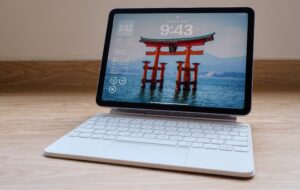
Magic Keyboard: A better option now than it was
If, by chance, you now own an M2 iPad Air Magic Keyboard from last year that works on the M3 model, then you do not need another Magic Keyboard. The new Magic Keyboard makes it a slightly better option because it is a bit less expensive($269 and up) and has the added new row of function keys (even though it still doesn’t flip back to work in a folio-style mode). It’s certainly my favorite choice for laptopifying your iPad.
This Magic Keyboard is heavy and thick. I have gotten used to it, but the whole setup with the 13-inch iPad Air ends up being heavier than a MacBook Air. Just a word of caution. However, there are a few more subtle changes between the iPad Air and iPad Pro models of the Magic Keyboard: for some reason, the Pro’s trackpad area is larger, and they shifted the keyboard up a little while keeping the same size. I don’t appreciate that. I prefer the layout of the iPad Pro keyboard, and I can’t fathom why the Air’s keyboard would be designed differently.
There are many other differences: The Air has no keyboard backlighting, while the Pro has one. And the interior material is not aluminum, like that of the Pro. The smaller trackpad is still a physical click trackpad instead of the Pro’s haptic one. It does have the pass-through USB-C port, just like Pro, but a lot of corners were cut.
The iPad: Still the Same, as Always.
During the past year, Apple Intelligence has been Apple’s major software concern, and with generative AI included in iPadOS, the iPad Air can run all of them, just as, surprisingly or not, they were all added last year. At this point, they just kind of suck…or are not that useful. For example, message and notification summarization can become irritating and may even mislead the user. Image Playground and Genmoji image generation cannot be compared with what other third-party apps offer. And Siri implements ChatGPT; frankly, you could just be using ChatGPT in the ChatGPT app. Furthermore, following the rumored delays of Apple’s long-overdue Siri overhaul, one may propose Apple Intelligence to take its time in being adopted into an everyday routine. For now, it remains a set of features that still feel like they are in beta.
Versatile, you’re saying. The iPad can run plenty of applications. It can multitask-to an extent, of course-and the M-series chips can multi-task even on a connected monitor. It can feel like a laptop. A full desktop computer in that regard, if you will. Well, it’s not a Mac, which drives me insane. I’m once again writing this review on the iPad Air but will file the review on my MacBook because working on our CMS is sometimes not too friendly on iPads. They’re not like Macs. Apple’s computer line is still continuing its bifurcation, and once again presents you with the question of whether you’re an iPad person or a Mac person, or perhaps both.
You can be both; I am, though, in that case you wouldn’t want to spend so much on that iPad, now would you? The entry iPad seems to be positioned as more of a casual accessory; the price of the iPad Air ranges from somewhat affordable ($599) to high-end laptop price if you boost storage (up to 1TB configs are on tap) or add accessories like the Apple Pencil Pro or Magic Keyboard.
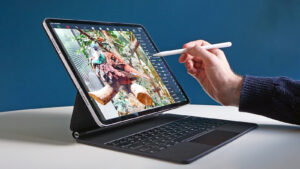
Maybe Next Time, Drop the “Air” Name?
This back of this iPad Air no longer has the advertising for the iPad Air from Apple. Only the Apple logo remains. Perhaps it is a signal. Air doesn’t mean anything right now in Apple’s iPad universe. The Air is an excellent tablet, and in the right configuration, this may just be the future-proof and more affordable iPad that’s right for you-especially if you want to push your iPad in applications that could use M3 performance. But, do not pay too much, and you will be satisfied.
What I’m looking for? As I’ve said, I’d fancy having these lovely, keyboarded, powerful iPads transform into Macs at the touch of a button and help me out there. Oh, and I’d love it to have an OLED display as well. But other than that, the Air covers everything else I’ve ever needed. Super expensive if they’re not ready to make the leap into MacOS convertibles, too. Maybe Apple’s think of focusing primarily on the low and midrange iPads this time around perhaps. Or, the M5 chip for the Pro just isn’t ready yet.
